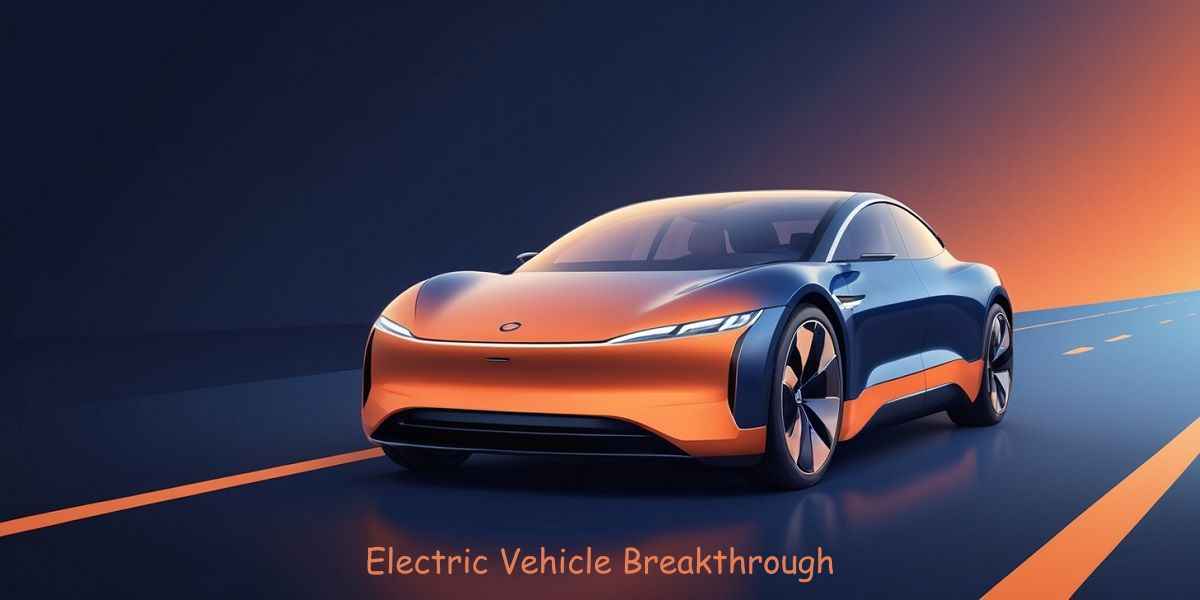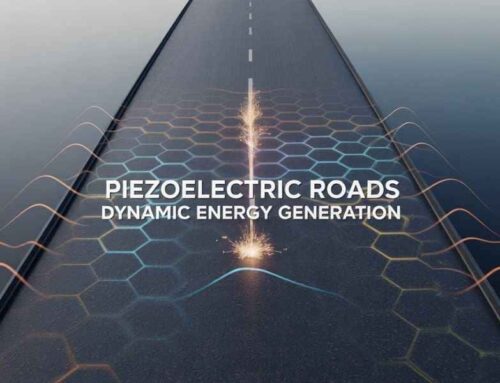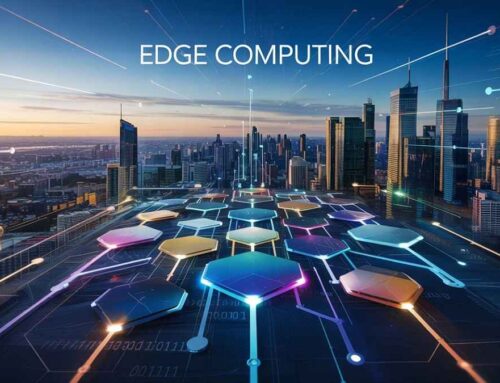
Are electric vehicles the key to a cleaner future?
What if the hum of engines no longer meant smog-choked skies? What if every mile traveled left no trace of pollution? The world stands at a crossroads and electric vehicles are steering us toward a radical transformation.
This isn’t just about swapping gas pumps for charging stations, it’s about reimagining mobility itself. As cities grapple with climate crises and industries race to meet net-zero targets, the electric vehicle revolution has become less of a choice and more of a necessity.
But how did we get here? Ten years ago, electric vehicles were niche products with limited range and sky-high prices. Today, they’re rolling off assembly lines faster than ever, powered by innovations that challenge conventional wisdom.
From Silicon Valley startups to legacy automakers, everyone is betting big on electrons over ethanol. Yet, the journey is far from complete. Range anxiety still looms. Charging networks feel like puzzle pieces missing corners. And the specter of resource scarcity casts a shadow over the shiny new era of clean transportation.
Let’s talk numbers. By the end of 2025, over 30 million electric vehicles are likely on global roads, representing about 2% of the total vehicle stock and over 25% of new car sales. There’s room to grow. There’s urgency to act.
The transportation sector accounts for nearly a quarter of global carbon emissions and road vehicles dominate that share. If we’re serious about curbing emissions, electric vehicles aren’t just part of the solution, they are the solution.
Still, skepticism lingers. Are electric vehicles truly zero-emission? What about the coal-powered factories churning out batteries? What happens when those lithium-ion packs reach the end of their lives? These questions aren’t roadblocks, they’re detours demanding better engineering, smarter policies and collective action.
This article peels back the layers of hype and hesitation to explore how electric vehicles are breaking barriers, bending curves and building bridges to a zero-emission future. Whether you’re a curious consumer, a policy advocate or simply someone who breathes air, the story of electric vehicles is your story. Let’s navigate the currents of innovation together.
The Rise of Electric Vehicles: A New Era Begins
Imagine a world where filling stations disappear. Not because they’re obsolete, but because they’re unnecessary. This vision drives the electric vehicle movement. Unlike internal combustion engines chained to fossil fuels, electric vehicles tap into a cleaner, quieter and increasingly abundant energy source: Electricity.
The shift isn’t subtle. In 2024, global sales of electric vehicles surged past 17 million units, a 25% jump from the previous year. Governments are setting deadlines to phase out gasoline and diesel cars. Automakers are pivoting factories to produce batteries instead of engines. The momentum is palpable.
Yet, the rise of electric vehicles isn’t just about numbers. It’s about reinvention. Traditional automakers like Ford and General Motors are spending billions to electrify their fleets, while newcomers like Rivian and Lucid Motors are pushing boundaries with cutting-edge designs.
Even luxury brands like Porsche and Mercedes-Benz are joining the charge, proving that electric vehicles can be as thrilling as they are sustainable. The narrative has shifted: electric vehicles aren’t just “Eco-Friendly Alternatives,” they’re performance machines, status symbols and technological marvels.
But why now? Three factors have converged to accelerate this transition. First, advancements in battery technology have shattered range limitations that once kept drivers tethered to gas stations. Second, plummeting battery costs have made electric vehicles affordable for mainstream buyers. Third, governments worldwide are tightening emissions regulations, forcing automakers to innovate or stagnate.
The result? A market where electric vehicles aren’t just viable, they’re inevitable.
Still, challenges loom. Charging infrastructure remains uneven. Battery production raises ethical and environmental concerns. And consumer perceptions, shaped by decades of gasoline dominance, take time to shift. Yet, every obstacle sparks ingenuity.
Let’s dive deeper into the breakthroughs turning electric vehicles from outliers into icons of progress.
Battery Breakthroughs: Powering the Future
What lies beneath the skin of every electric vehicle? A battery pack, a complex, humming heart that determines range, performance and practicality. For years, battery limitations were the Achilles’ heel of electric mobility. Early models sputtered with 100-mile ranges, leaving drivers calculating routes like chess moves. Today, that narrative is crumbling.
Modern lithium-ion batteries have doubled in energy density since 2010, squeezing more power into smaller, lighter packages. Tesla’s Model S Plaid boasts a 396-mile range. Lucid Air’s “Dream Edition” stretches that to 520 miles.
These numbers rival and sometimes surpass, gasoline-powered counterparts. But the real magic isn’t just in capacity; it’s in innovation.
Solid-state batteries, long heralded as the holy grail of energy storage, are inching toward commercialization. Toyota, QuantumScape and Samsung SDI are racing to perfect these next-gen cells, which replace liquid electrolytes with solid materials. The benefits? Faster charging, longer lifespans and drastically reduced fire risks.
Imagine juicing up your vehicle in 10 minutes instead of 30. Envision batteries lasting 15 years instead of 8. Solid-state tech could make these dreams reality.
Meanwhile, researchers are rethinking the chemistry of batteries altogether. Sodium-ion cells, iron-phosphate cathodes and lithium-sulfur experiments promise cheaper, greener alternatives to cobalt and nickel, materials linked to ethical and environmental controversies.
Startups like OneD Battery Sciences are tweaking silicon anodes to hold more charge without swelling. Others are exploring wireless charging embedded in highways, a sci-fi concept edging closer to deployment.
But progress isn’t linear. Battery production remains energy-intensive. Mining lithium and cobalt often displaces communities and scars landscapes. Recycling infrastructure lags behind demand.
These issues demand solutions as urgent as the climate crisis itself. Yet, every lab breakthrough brings electric vehicles one step closer to their zero-emission promise.
Charging Infrastructure: Plugging Into Progress
A car is only as free as its access to fuel. For electric vehicles, that means charging infrastructure. Over 1.3 million new public EV chargers were installed worldwide in 2024, a jump of over 30% from the year prior.
Still, gaps persist. Rural areas remain underserved. Urban centers grapple with overcrowded hubs. And cross-country travelers face the modern equivalent of the Oregon Trail: hunting elusive fast chargers while range anxiety gnaws at their confidence.
Governments and private companies are closing these gaps. The U.S. Department of Energy’s National Electric Vehicle Infrastructure (NEVI) Formula Program aims to install 500,000 chargers by 2025, creating a national grid spaced every 50 miles.
In Europe, Ionity, a joint venture by BMW, Ford and others, is building high-speed corridors connecting major cities. Tesla’s Supercharger network, once exclusive to its own vehicles, is opening to competitors in select markets, signaling a shift toward interoperability.
But hardware alone isn’t enough. Software innovations are streamlining the charging experience. Apps like PlugShare and ChargePoint map real-time availability, pricing and compatibility. Vehicle-to-grid (V2G) systems let electric cars feed energy back into homes or the grid, turning parked cars into mobile power plants.
Dynamic load management prevents electrical grids from buckling under peak demand, ensuring neighborhoods don’t plunge into darkness when dozens of vehicles charge overnight.
The ultimate goal? Seamless integration. Imagine pulling into a parking garage where inductive charging pads automatically top up your battery. Or a highway rest stop where solar canopies power ultra-fast chargers.
These concepts aren’t fantasy, they’re blueprints for a future where charging an electric vehicle feels as effortless as plugging in a smartphone.
Affordability and Accessibility: Driving Down Costs
Price tags still give buyers pause. An average electric vehicle costs $20,000 more than its gasoline counterpart. But hidden savings tell a different story.
The U.S. Department of Energy estimates that charging an electric vehicle costs half as much per mile as fueling a combustion engine. Maintenance bills shrink too, no oil changes, fewer brake replacements (Thanks to Regenerative Braking) and fewer moving parts to fail.
Governments are sweetening the deal. The Inflation Reduction Act in the U.S. offers tax credits up to $7,500 for new electric vehicles, while Norway’s aggressive incentives have pushed electric vehicle adoption to 90% of new sales.
Automakers are playing their part: Chevrolet’s Bolt EV starts at under $27,000. Tesla’s rumored $25,000 compact car could democratize electric ownership further.
Yet, affordability isn’t just about upfront costs. It’s about access. Low-income communities disproportionately bear the brunt of air pollution yet often lack the resources to switch to cleaner vehicles.
Programs like California’s Clean Vehicle Rebate Project target these disparities, offering rebates for used electric vehicles and subsidized charging in disadvantaged neighborhoods.
Car-sharing platforms like Zipcar are adding electric models to their fleets, letting users test-drive sustainability without the commitment.
The used electric vehicle market is another game-changer. Early adopters upgrading to newer models flood the pre-owned market with reliable, decade-old vehicles at bargain prices. As supply grows, prices will continue to dip, making zero-emission transport a right, not a privilege.
Environmental Impact: Beyond Tailpipe Emissions
Let’s address the elephant in the room: Are electric vehicles truly zero-emission? The answer hinges on nuance. Yes, they emit nothing from their tailpipes. No, they aren’t entirely clean if charged on coal-powered grids.
A 2021 study by the International Council on Clean Transportation found that electric vehicles produce half the lifetime emissions of gasoline cars, even when accounting for manufacturing and energy sources. In countries like Sweden and France, where renewables dominate the grid, electric vehicles emit 80% less carbon than combustion engines.
Battery production remains contentious. Mining lithium, cobalt and nickel ravages ecosystems and exploits labor. However, recycling initiatives are gaining traction.
Companies like Redwood Materials and Li-Cycle recover over 95% of raw materials from spent batteries, reducing reliance on new mining. Closed-loop systems, where old batteries feed new ones, are becoming industry standards.
Then there’s the question of longevity. Electric vehicle drivetrains last longer than combustion engines, with fewer breakdowns and lower maintenance needs.
A Tesla Model 3’s drivetrain, engineered for 1 million miles, outpaces the 150,000-mile lifespan of conventional cars. Extended lifespans amortize the initial carbon footprint of manufacturing, making electric vehicles cleaner over time.
Ultimately, the environmental equation favors electric vehicles, but only if paired with clean energy. Solar farms powering charging stations, wind turbines feeding grids and green hydrogen refineries are the yin to electric vehicles’ yang. The two revolutions must advance in lockstep.
Policy and Global Commitments: Steering the Ship
No movement of this scale thrives without policy scaffolding. Over 30 countries have pledged to phase out gasoline and diesel vehicles by 2035 or earlier. The European Union’s “Fit for 55” package mandates a 55% reduction in vehicle emissions by 2030, effectively banning combustion engines.
China, the world’s largest automotive market, aims for 40% electric vehicle sales by 2030. Even oil-rich nations like Saudi Arabia are investing in electric mobility, recognizing the inevitability of change.
Subsidies, taxes and urban planning are shifting gears. London’s Ultra Low Emission Zone charges polluting vehicles to enter the city center, while Amsterdam plans to ban combustion engines entirely by 2030.
Incentives for automakers to go electric are equally potent: California’s Advanced Clean Cars program rewards manufacturers that exceed zero-emission quotas, creating a financial carrot-and-stick approach.
But policy alone isn’t enough. It needs teeth. Enforcement mechanisms, penalties for non-compliance and funding for research and infrastructure are critical. Public-private partnerships bridge gaps, consider the U.S. Department of Energy’s collaboration with GM to develop cheaper, longer-lasting batteries. Without such alliances, the electric vehicle transition risks stalling in bureaucratic limbo.
Challenges Ahead: Navigating the Roadblocks
Progress isn’t a straight line. Electric vehicles face hurdles that demand creativity and grit. Raw material shortages top the list. The International Energy Agency predicts a 40-fold surge in lithium demand by 2040 compared to 2020, straining supply chains already stretched thin.
Cobalt, mined largely in the Democratic Republic of Congo under ethically fraught conditions, remains a flashpoint. Solutions? Diversifying supply chains, investing in recycling and developing alternative chemistries are crucial steps.
Then there’s the grid. Electrifying transportation requires quadrupling global electricity demand by 2050. Aging grids in countries like India and the U.S. struggle to handle peak loads today, how will they cope tomorrow? Upgrading infrastructure, decentralizing energy production and embracing smart grids are non-negotiable.
Consumer skepticism persists, too. Misinformation about battery fires, winter range loss and charging inconvenience still deters buyers. Education campaigns, like Tesla’s “Range Reality Check” tool that factors weather and terrain into estimates, can dispel myths. Test drive programs and community-led workshops also build trust.
Finally, there’s the elephant in the parking lot: job displacement. Auto industry workers fear obsolescence as factories shift from engines to batteries. Retraining programs, union partnerships and phased transitions are essential to ensure the electric revolution doesn’t leave people behind.
The Future Unveiled: What Lies Ahead
The road ahead is paved with possibilities. Autonomous electric taxis, like those tested by Waymo and Cruise, could redefine urban mobility. Wireless charging embedded in roads might eliminate the need for plugs altogether. And as artificial intelligence optimizes battery management, electric vehicles could become rolling energy storage units, stabilizing grids during blackouts.
The fusion of electric vehicles with renewable energy and smart cities will create ecosystems where transportation, energy and data intersect seamlessly. Imagine a world where your car charges during solar surges, sells excess power back to the grid during peak hours and autonomously ferries goods after dropping you at work.
Automakers are already sketching this future. Volkswagen’s “Car.Software” division, now known as CARIAD, aims to make vehicles “Smartphones on Wheels,” while General Motors envisions a “Zero-Crash, Zero-Emission, Zero-Congestion” reality. These aren’t pipe dreams, they’re roadmaps.
Conclusion: The Charge Forward
Electric vehicles are more than machines. They’re movements. They’re manifestations of humanity’s resolve to heal a planet in crisis. The barriers are real, but so is the progress. Every battery breakthrough, every charging station installed, every policy signed into law inches us closer to a zero-emission horizon.
This isn’t a revolution reserved for engineers or policymakers. It’s one for drivers, dreamers and descendants. It’s for anyone who wants to breathe cleaner air, reduce dependence on volatile fuel markets and leave a livable world for future generations.
So, the question isn’t whether electric vehicles matter. The question is: How will you be part of the change? Test drive one. Advocate for charging stations in your community. Support leaders prioritizing clean energy. The road to zero-emission starts with a single step and a lot of horsepower.
Ready to charge forward? The future is waiting.
Call to Action
Explore electric vehicle options in your area. Visit PlugShare to locate nearby charging stations or contact your local representative to advocate for clean transportation policies. Share this article to spark conversations about sustainable mobility. Together, we can drive toward a zero-emission future, one mile at a time.
FAQs
Q1: What are solid-state batteries and how do they improve electric vehicle performance?
A1: Solid-state batteries replace traditional liquid electrolytes with solid materials, offering faster charging (10 minutes instead of 30), longer lifespans (Up to 15 Years) and reduced fire risks. Companies like Toyota and QuantumScape are advancing this technology to enhance range and safety.
Q2: How is global charging infrastructure expanding to support electric vehicles?
A2: Governments and companies are investing heavily in charging networks. The U.S. aims to install 500,000 chargers by 2030, while Europe’s Ionity network builds high-speed corridors. Tesla’s Superchargers are opening to non-Tesla vehicles and apps like PlugShare streamline access.
Q3: Are electric vehicles truly zero-emission?
A3: While electric vehicles emit nothing from their tailpipes, their overall environmental impact depends on energy sources. On coal-heavy grids, emissions are higher, but studies show electric vehicles still produce half the lifetime emissions of gasoline cars. In regions with renewables, savings exceed 80%.
Q4: What factors are making electric vehicles more affordable?
A4: Battery costs have dropped significantly and government incentives like tax credits ($7,500 in the U.S.) reduce upfront costs. Used electric vehicle markets are growing and automakers like Chevrolet and Tesla are launching budget-friendly models (The $25,000 rumored Tesla compact car).
Q5: How do government policies accelerate electric vehicle adoption?
A5: Over 30 countries have set phase-out dates for gas/diesel cars. Policies like California’s Advanced Clean Cars program reward automakers for zero-emission sales, while urban zones like London’s Ultra Low Emission Zone penalize polluting vehicles.
Q6: What challenges do electric vehicles face beyond charging and cost?
A6: Raw material shortages (Lithium, Cobalt), grid strain from increased electricity demand and ethical concerns around mining practices remain hurdles. Recycling infrastructure and alternative battery chemistries are critical to addressing these issues.
Q7: How do electric vehicles contribute to a circular economy?
A7: Battery recycling initiatives recover over 95% of raw materials, reducing reliance on new mining. Companies like Redwood Materials and Li-Cycle are pioneering closed-loop systems where old batteries feed new ones, minimizing waste.
Q8: What role do renewable energy sources play in electric vehicle sustainability?
A8: Clean energy is essential for maximizing electric vehicles’ environmental benefits. Solar-powered charging stations, wind-fed grids and green hydrogen refineries ensure that electric mobility aligns with net-zero goals.
Q9: How does the shift to electric vehicles impact auto industry jobs?
A9: Factories transitioning from engines to batteries require retraining programs to reskill workers. Partnerships between automakers and unions, along with phased transitions, aim to prevent job displacement while fostering new opportunities in EV production.
Q10: What future innovations are shaping electric mobility?
A10: Autonomous electric taxis, wireless charging embedded in roads and AI-optimized battery management are emerging trends. Vehicles may soon act as mobile energy storage units, stabilizing grids during peak demand or blackouts.














